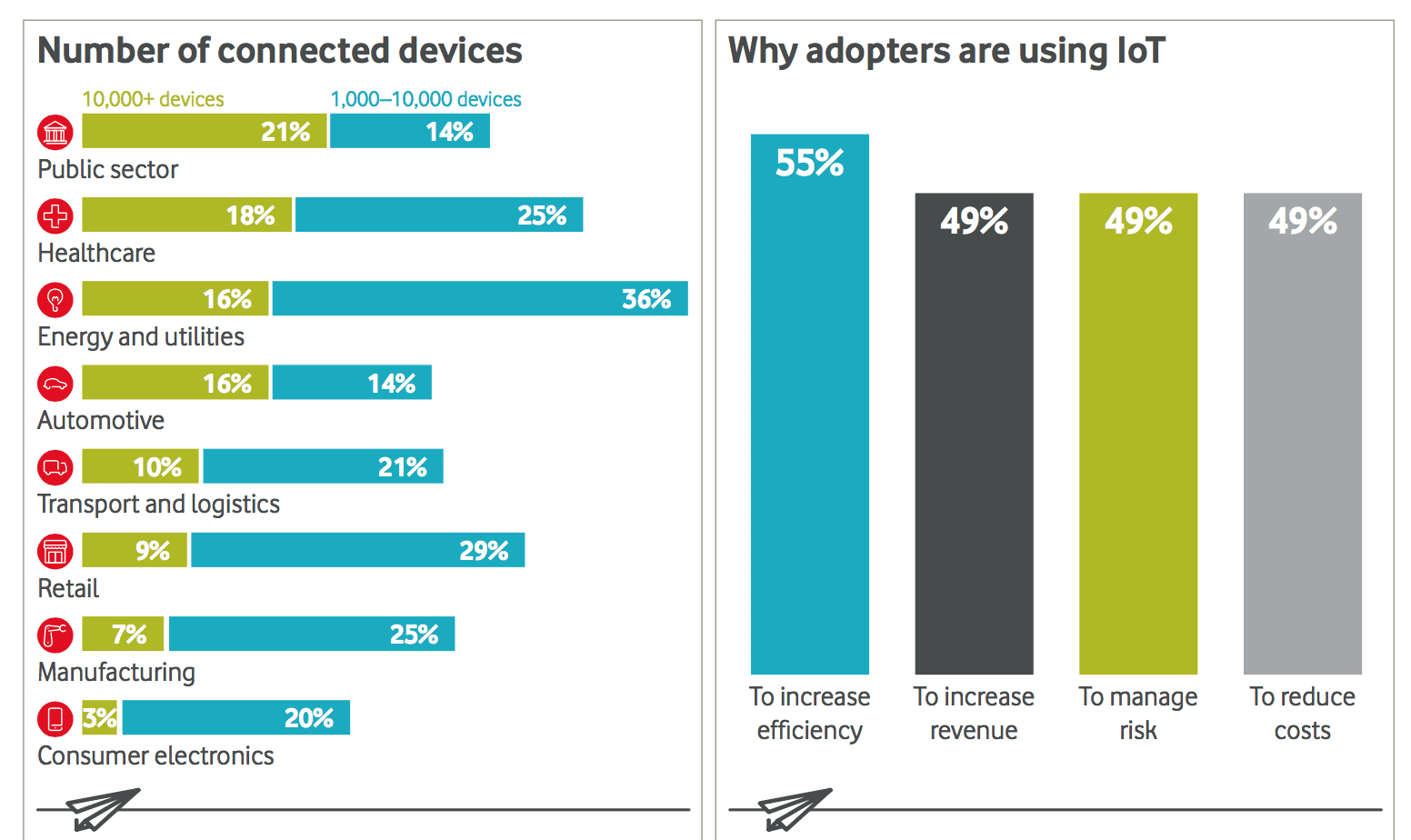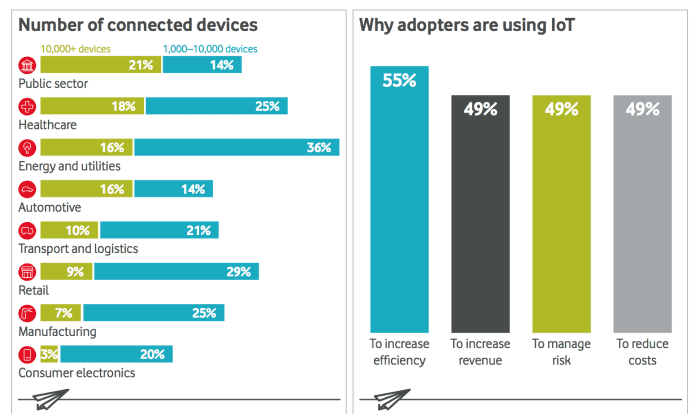“Those that have adopted IoT are pushing ahead at scale, spending more…than 12 months ago,” Erik Brenneis, Vodafone internet of things director and CEO of Global Enterprise, wrote in the telecom group’s annual IoT Barometer 2017/18 report. “Many have also dramatically increased the number of devices they have connected. There’s a reason they’re expanding projects and investing more: IoT delivers. Nearly all of the companies that have adopted IoT have already seen a return on their investment.”
In terms of sheer volume of connected devices, the energy and utilities, transport and logistics, retail, manufacturing and health care verticals are leading in adoption with the primary goal of increasing efficiency. Those findings are detailed in the below infographic developed by Vodafone.

Looking ahead, security is a big concern, which is a relative simple paradigm–more network endpoints equates to more potential network vulnerabilities–but a complex solution. A mix of proprietary and standardized connectivity schemes, mixed with interoperability of legacy and modern infrastructures, and geographically, or even mobile, assets, add up to a complex security environment.
According to Vodafone, when evaluating a solution, deciding factors, based on the research, are security and network coverage.
Brenneis highlighted the potential of NB-IoT as a mechanism to increase coverage while maintaining cost efficiencies. But implement internet of things solutions at scale isn’t a core competency for many of the enterprise and industrial players that could most benefit from implementation. “That’s why we’ve seen adopters increasing their use of partners to deliver and/or manage their IoT solutions.”
Another long-term factor at play here, according to Vodafone, is the impact ongoing data analysis can have on an organization. What starts as a focused project with specific goals, “can snowball,” according to the report. “Once you have…sensors in place, the possibilities open up.”
For an example, consider a smart street light meant to ostensibly reduce power consumption. “But sensors in street lights can also be used to monitor weather conditions or traffic, or to help improve safety of residents. And once the lamp post is connected, it an also be used to provide other service, from city-wide Wi-Fi to advertising.”

